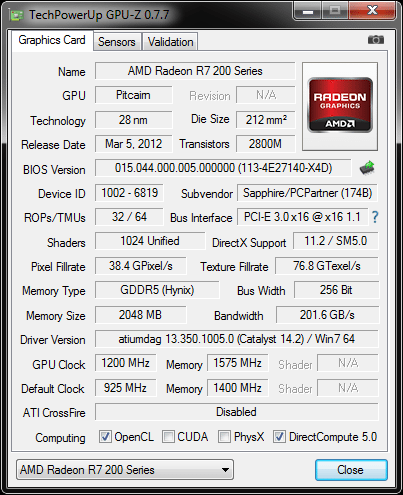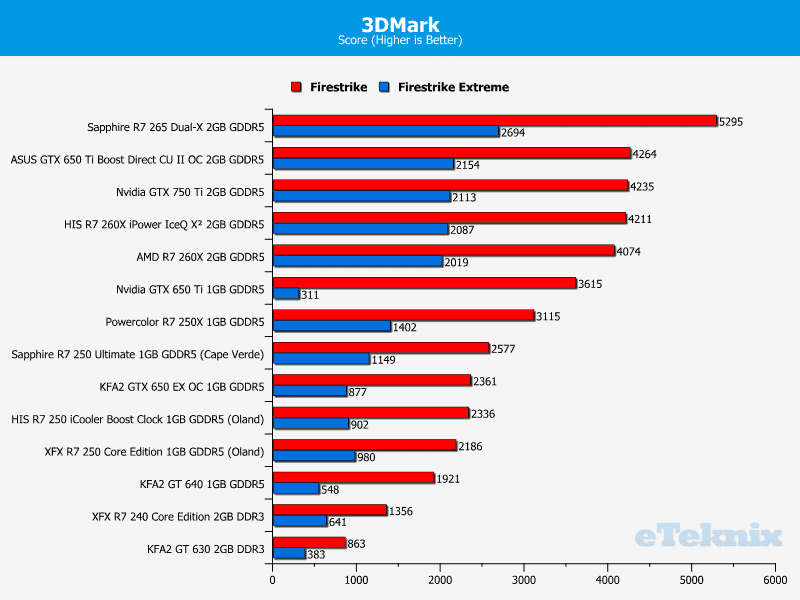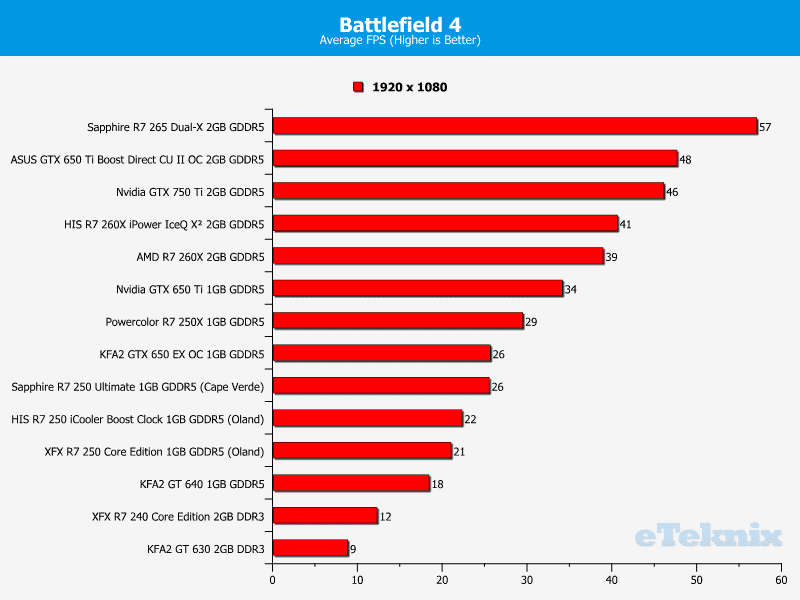Sapphire AMD Radeon R7 265 Dual-X 2GB Review
Ryan Martin / 11 years ago
Overclocking & Overclocked Performance
The overclocking ability of a graphics card is an important buying consideration irrespective of whether the graphics card is low end or enthusiast level. I’m sure everyone will agree that the more extra performance from overclocking – the better. In our overclocking we push each graphics card to its maximum stable core and memory frequencies. Typically we also raise the power limit to the maximum and where possible raise the voltages if this results in higher overclocks being achieved. We always aim for “24/7” stable overclocks that DO NOT result in potential heat on longevity issues so if we do raise the voltage it is still kept within safe parameters. The latest beta version of MSI’s Afterburner software is the overclocking utility of choice: this is because MSI Afterburner Beta versions typically allows you to circumvent overclocking restrictions – particularly those set by AMD.

Overclocking on this graphics card was nothing short of brilliant. We added a whopping 275MHz to the GPU core clock and 175MHz actual (700MHz effective) to the memory clock. This resulted in some massive gains in performance compared to all the other cards that we also overclocked. While the GTX 650 Ti Boost and GTX 750 Ti are reasonably close to the R7 265 at stock, when you factor in overclocking for all cards the R7 265 extends its lead greatly. We even managed to hit close to the magical 60 FPS mark in Battlefield 4 suggesting the Sapphire R7 265 Dual-X is a perfect card for 60Hz 1080p gaming.





















